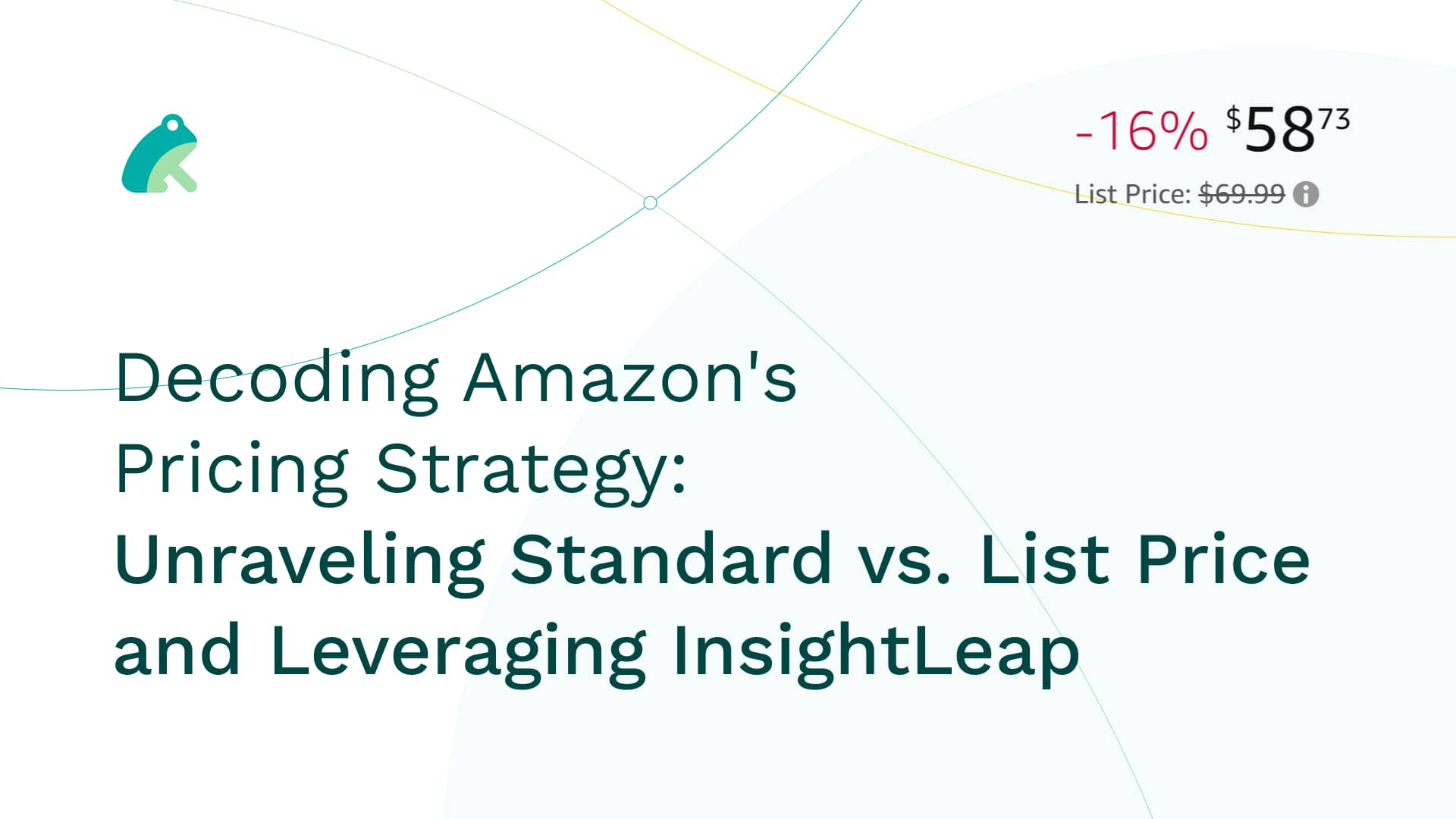Decoding Amazon’s Pricing Strategy: Unraveling Standard vs. List Price and Leveraging InsightLeap
December 20, 2025

Introduction:
Amazon, the e-commerce giant, has revolutionized the way we shop, offering a vast range of products at competitive prices. Behind its success lies a well-crafted pricing strategy that attracts customers and maximizes profits. In this article, we will explore Amazon's overall pricing strategy, shed light on the difference between standard and list prices, and demonstrate how businesses can leverage InsightLeap to develop an effective pricing strategy of their own.
Understanding Amazon's Pricing Strategy:
Amazon's pricing strategy is centered around customer-centricity, competitive pricing, and constant innovation. Key elements of their approach include:
- Dynamic Pricing: Amazon employs sophisticated algorithms to analyze customer behavior, competitor prices, demand fluctuations, and inventory levels. This data-driven approach allows them to adjust prices in real-time, ensuring competitiveness and maximizing revenue.
- Loss Leaders: Amazon often sells popular products at a loss, focusing on customer acquisition and retention. This strategy allows them to establish a loyal customer base and cross-sell other profitable items.
- Volume Discounts: By leveraging economies of scale, Amazon negotiates lower prices with suppliers, enabling them to offer volume discounts to customers. This approach encourages larger purchases and increases customer loyalty.
- Bundling and Cross-Selling: Amazon excels at bundling complementary products and suggesting additional items, thus driving higher sales and customer satisfaction. By leveraging its vast product database and customer browsing history, Amazon presents personalized recommendations, boosting overall sales.
Standard Price vs. List Price:
Standard price, also known as the selling price or purchase price, refers to the actual price paid by the customer during the purchase. It is the amount customers see on the product page, often reflecting any discounts or promotions available at that time.
On the other hand, list price, also called the manufacturer's suggested retail price (MSRP), is the price suggested by the manufacturer for the product. List prices are often displayed alongside the standard prices, showcasing potential savings or the percentage of discount offered to entice customers.
Amazon typically displays both the standard price and the list price to create a perception of value and urgency, enticing customers with the potential savings they can enjoy by purchasing from Amazon.
Leveraging InsightLeap for Pricing Strategy Optimization:
Developing an effective pricing strategy can be a complex task. This is where InsightLeap, an advanced pricing intelligence tool, comes into play. InsightLeap offers valuable insights into market trends, competitor pricing, and customer preferences to help businesses optimize their pricing strategies. Here's how InsightLeap can be leveraged:
- Competitive Analysis: InsightLeap provides detailed competitor analysis, enabling businesses to understand how their pricing compares to competitors. This information empowers them to make informed decisions and adjust prices to remain competitive in the market.
- Dynamic Pricing: InsightLeap enables businesses to implement dynamic pricing strategies similar to those used by Amazon. By leveraging real-time data and market dynamics, businesses can adjust prices on-the-go, maximizing revenue and maintaining competitiveness.
- Customer Segmentation: InsightLeap helps identify different customer segments based on their purchasing behavior, allowing businesses to tailor pricing strategies to specific target audiences. This personalized approach enhances customer satisfaction and improves overall sales.
Conclusion:
Amazon's pricing strategy revolves around customer-centricity, competitive pricing, and constant innovation. Understanding the difference between standard and list prices is crucial for both buyers and sellers, as it provides insights into potential savings and product value. By leveraging InsightLeap, businesses can gain a competitive edge by optimizing their pricing strategies based on market dynamics, competitor analysis, and customer preferences. In today's dynamic e-commerce landscape, InsightLeap serves as a valuable tool for businesses seeking to enhance their pricing strategies and drive sustainable growth.